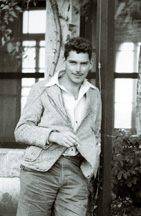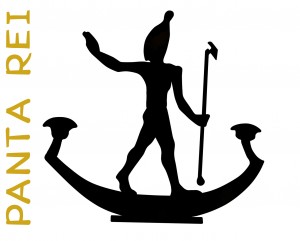| Cover | Ziffer | Inhalt |
![]() | XX | Michael Petzet: International Principles of Preservation
(Monuments and Sites XX)
Berlin 2009, ISBN 978-3-930388-54-7
Download der Publikation im PDF-Format (9,5 MB) |
|
![]() | XIX | The Giant Buddhas of Bamiyan. Safeguarding the Remains
edited by Michael Petzet in cooperation with RWTH Aachen (Michael Jansen) and TU München (Erwin Emmerling)
(Monuments and Sites XIX)
Berlin 2009, ISBN 978-3-930388-55-4
Download der Publikation im PDF-Format (12,2 MB) |
|
![]() | XVIII | Gudrun Wolfschmidt (ed.): Cultural Heritage of Astronomical Observatories. From Classical Astronomy to Modern Astrophysics
(Monuments and Sites XVIII)
Berlin 2009, ISBN 978-3-930388-53-0
Proceedings of the International ICOMOS Symposium in Hamburg, October 14–17, 2008
Download der Publikation im PDF-Format (150,0 MB) |
|
![]() | XVII | Susan Barr, Paul Chaplin (eds.): Historical Polar Bases – Preservation and Management
(Monuments and Sites XVII)
Lørenskog 2008, ISBN 978-82-996891-2-0 |
|
![]() | XVI | The World Heritage List: What is OUV? Defining the Outstanding Universal Value of Cultural World Heritage Properties
compiled by Jukka Jokilehto, with contributions from Christina Cameron, Michel Parent and Michael Petzet
(Monuments and Sites XVI)
Berlin 2008, ISBN 978-3-930388-51-6
Download der Publikation im PDF-Format (2,0 MB) |
|
![]() | XV | ICOMOS-ISCS: Illustrated Glossary on Stone Deterioration Patterns / Illustriertes Glossar der Verwitterungsformen von Naturstein / English-German version / englisch-deutsche Fassung
(Monuments and Sites XV)
Petersberg 2010, ISBN 978-3-86568-667-1
Basierend auf der englisch-französischen, von V. Vergès-Belmin zusammengestellten Ausgabe, Champigny/Marne 2008, ISBN 978-2-918086-00-0 |
|
![]() | XIV | Ciudades Históricas Iberoamericanas / Historic Towns of Ibero America / Villes Historiques Ibéro Américaines
(Monuments and Sites XIV)
Cuenca 2005, ISBN 84-689-4050-X
Ergebnisse einer Tagung in Madrid und Cuenca, Spanien, 27. September – 1. Oktober 2004 |
|
![]() | XIII | Nuevas Miradas Sobre la Autenticidad e Integridad en el Patrimonio Mundial de las Américas / New Views on Authenticity and Integrity in the World Heritage of the Americas
An ICOMOS study compiled by Dr. Francisco J. López Morales
(Monuments and Sites XIII)
Ergebnisse einer Tagung in San Miguel de Allende, Guanajuato, Mexiko, 24.–26. August 2005 |
|
![]() | XII | The World Heritage List: Filling the Gaps – an Action Plan for the Future / La Liste du Patrimoine Mondial: Combler les lacunes – un plan d'action pour le futur
compiled by Jukka Jokilehto, with contributions from Henry Cleere, Susan Denyer and Michael Petzet
(Monuments and Sites XII)
München 2005
Download der Publikation im PDF-Format (2,9 MB) |
|
![]() | XI | The Venice Charter / La Charte de Venise 1964 – 2004 – 2044?
Budapest 2005, ISBN 963-513-186-0
(Monuments and Sites XI)
Ergebnisse einer Tagung zum 40. Jubiläum der Charta von Venedig in Budapest und Pécs, Ungarn, 22.–27. Mai 2004 |
|
![]() | X | Encuentro Científico Internacional sobre Itinerarios Culturales / International Scientific Conference on Cultural Routes / Réunion internationale scientifique des Itinéraires culturels
(Monuments and Sites X)
2005, ISBN 84-88991-22-3
Ergebnisse einer Tagung in Ferrol, Spanien, 1.–3. Oktober 2004 |
|
![]() | IX | La Representatividad en la Lista del Patrimonio Mundial. El Patrimonio Cultural y Natural de Iberoamérica, Canadá y Estados Unidos
(Monuments and Sites IX)
2004
Ergebnisse einer Tagung in Santiago de Querétaro, Mexiko, 12.–16. Dezember 2003 |
|
![]() | VIII | Susan Barr, Paul Chaplin (eds.): Cultural Heritage in the Arctic and Antarctic Regions
(Monuments and Sites VIII)
Lørenskog 2004, ISBN 82-996891-1-2 |
|
![]() | VII | Manfred Schuller: Building Archaeology
(Monuments and Sites VII)
München 2002, ISBN 3-87490-677-9
Download der Publikation im PDF-Format (18,9 MB) |
|
![]() | VI | Helmut Becker, Jörg W. E. Fassbinder: Magnetic Prospecting in Archaeological Sites
(Monuments and Sites VI)
München 2001, ISBN 3-87490-675-2
Download der Publikation im PDF-Format (21,5 MB) |
|
![]() | V | Vernacular Architecture / Architecture vernaculaire / Arquitectura Vernácula
(Monuments and Sites V)
München 2002, ISBN 3-8794-678-7
Download der Publikation im PDF-Format (15,8 MB) |
|
![]() | IV | Dirk Bühler: Puebla. Patrimonio de Arquitectura Civil del Virreinato
(Monuments and Sites IV)
München 2001, ISBN 3-924183-81-3
Download der Publikation im PDF-Format (37,3 MB) |
|
![]() | III | Wu Yongqi, Zhang Tinghao, Michael Petzet, Erwin Emmerling, Catharina Blänsdorf (eds.): The Polychromy of Antique Sculptures and the Terracotta Army of the First Chinese Emperor. Studies on Materials, Painting Techniques and Conservation
(Monuments and Sites III)
München 2002, ISBN 3-8794-679-5
Ergebnisse einer Tagung in Xi'an, Shaanxi History Museum, 22.–28. März 1999
Download der Publikation im PDF-Format (41,8 MB) |
|
![]() | II | Catharina Blänsdorf, Erwin Emmerling, Michael Petzet (eds.): The Terracotta Army of the First Chinese Emperor Qin Shihuang / Die Terrakottaarmee des Ersten Chinesischen Kaisers
(Monuments and Sites II)
München 2001, ISBN 3-87490-674-4
Download der Publikation im PDF-Format (185,0 MB) |
|
![]() | I | International Charters for Conservation and Restoration / Chartes Internationales sur la Conservation et la Restauration / Cartas Internacionales sobre la Conservación y la Restauración
(Monuments and Sites I)
2. Aufl. München 2004, ISBN 3-87490-676-0
Download der Publikation im PDF-Format (42,0 MB) |

































































 Corpus Inscriptionum Latinarum II2
Corpus Inscriptionum Latinarum II2 Astigitanus
Astigitanus Municipios antiguos de la CAM
Municipios antiguos de la CAM









